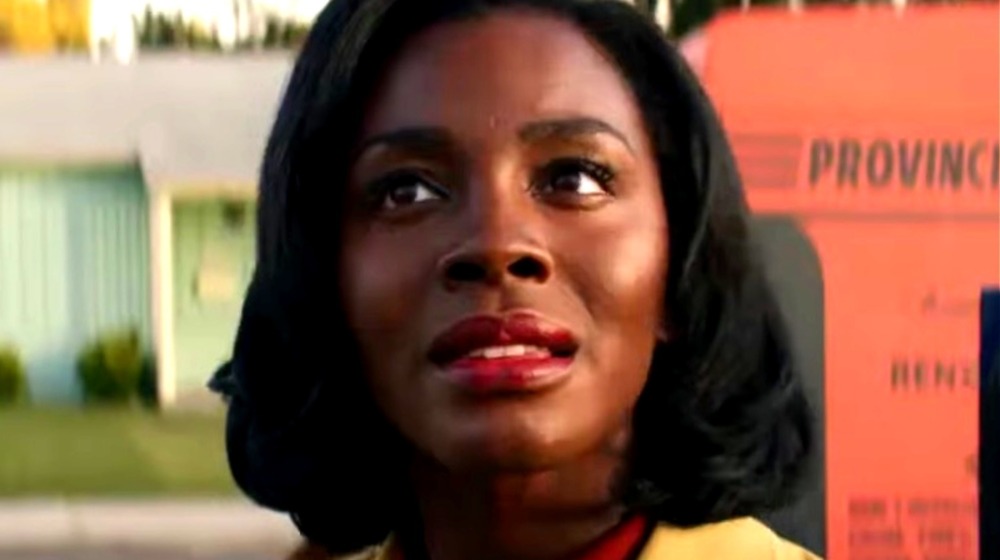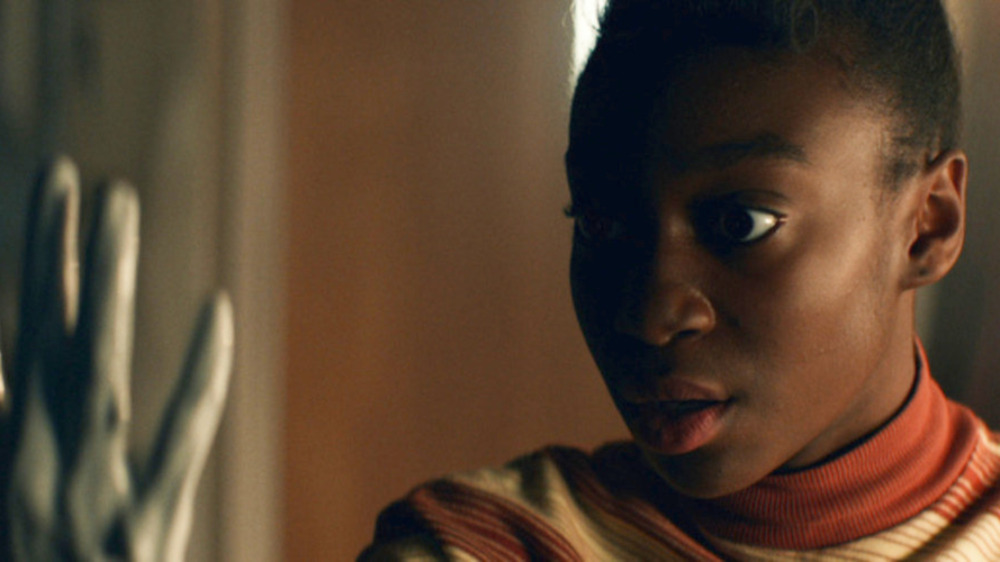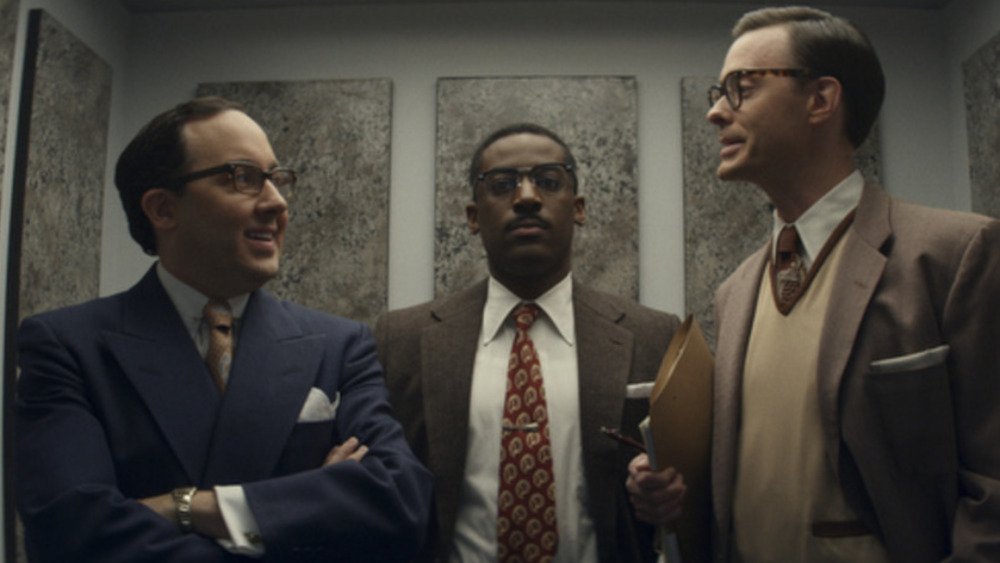The Ending Of Them Season 1 Explained
Contains spoilers for Them
Season 1 of Amazon Prime Video's original anthology series Them, billed as Them: Covenant, is set in 1953 and tells the story of the fictional Emory family. When the Emorys move from North Carolina to East Compton, California, they must battle against hateful, racist neighbors and supernatural forces in order to survive. Each of the family members — mother Livia "Lucky" Emory (Deborah Ayorinde), father Henry (Ashley Thomas), and daughters Ruby Lee (Shahadi Wright Joseph) and Gracie (Melody Hurd) — are immediately haunted by different evil entities upon moving into their new home.
The season's two-part finale, "Covenant" and "Covenant II," tells in part the origin story of the Black Hat Man (Christopher Heyerdahl), the entity behind the neighborhood's malevolent nature. Lucky fights to save her family from the horrors that surround them, and as the smoke clears, the Emory family is still standing. For those who weren't sure how that happened, this is the ending of Them season 1 explained.
The Emory family has to learn to cope with their pain
The horrific murder of the Emorys' youngest child Chester is what drove the family to escape the horrors of the Jim Crow Era South towards a new life in California. But with them came the same fears and doubts they had in North Carolina. Da Tap Dance Man (Jeremiah Birkett) represents Henry's feelings of helplessness to protect his family since his wife was attacked. Youngest daughter Gracie fears the severe Miss Vera (Dirk Rogers), a book character and manifestation of the child's growing anxieties. Teenager Ruby Lee is driven to self-harm by Doris (Sophie Guest), a white girl from her school who represents everything Ruby Lee thinks she'd rather be. The girls also fear their mother, who in turn is driven to self-doubt and the edge of madness by the Black Hat Man.
It's not until Lucky believes in herself that she is able to escape the oppressive asylum. Armed with the knowledge that the Black Hat Man is what is truly haunting them, Lucky returns to save her family. She's able to enter the others' supernatural realms because of her faith in her family's bond. Lucky saves Gracie from Miss Vera because she always believed Gracie, and she saves Ruby from hurting herself by reminding her she would never hurt her, unlike Doris. Lucky reaches her husband at his lowest point, reminding them of their family.
Henry breaks the hold Da Tap Dance Man has on him by shooting him and wiping away his makeup to show a white man. The reveal symbolizes that Da Tap Dance Man was another manifestation of the fears and doubts the family had to overcome. Nearly all the ghosts give small hints that they are all different forms of Hiram Epps, aka the Black Hat Man.
When Lucky faces down Hiram Epps, she's able to overcome his illusions by standing her ground. Lucky shouts the words, "I'm right here, I see you" in defiance of Hiram, which cripples him and forces him to face the unjust pain he inflicted upon the Black family in his town.
Them season 1 puts a mirror up to current issues in America
The long-running history of racial unrest in the United States is a main theme of Them season 1, as is the concept of the American Dream. In regards to the horror genre of the show, Them creator Little Marvin said in an interview with Variety that "being able to explore the sort of darkness beneath the dream of homeownership and beneath the American Dream was the origin of the story."
Although it's set in the 1950s, Them season 1 reflects the issues Black Americans still face today, particularly in the housing market. "'Will I get that loan? Will I not get that loan? Will they look at my house? Is there a reason my house is getting appraised for less than it should be?' These are all questions that are based on decades and decades of disenfranchisement within this market," Marvin explained to Variety. "I really wanted to explore that, the seed of that, and also explore the fact that we are very much still living in a segregated country in many ways."
Marvin also said that his research of the city of Compton made him realize that the Los Angeles County suburb does have its roots entrenched in white supremacy, a discovery he said lit a series of lightbulbs in his head for the show's concept. Additionally, Marvin wanted to depict the reality of what many families during the Great Migration faced: arriving to a new place "only to be treated with some of the same terror and hatred and ire that they were trying to escape from in the south."
In regards to the dramatically violent scenes in the show, Marvin said he felt they were necessary to get his message across. He explained to The Los Angeles Times that while there may be a concern in this regard, he believes in the story's integrity, as the violence builds towards the overall message. When speaking on the slaying of infant Chester, he said, "I wanted a scene that would rip through the screen, grab the viewer by the jugular and force them to contend with a history of violence against Black bodies in this country." The same sentiment applies to the scenes depicting the blinding and hanging of Martha (Nona Parker Johnson) and Grafton (Cranston Johnson).
The show's first season has been compared to similar horrors like Jordan Peele's Us, Antebellum, and HBO's Lovecraft Country – all of which serve to exemplify the racism Black Americans have been subjected to.
Them season 1 is available to stream on Amazon Prime Video, and has been renewed for a second season.


